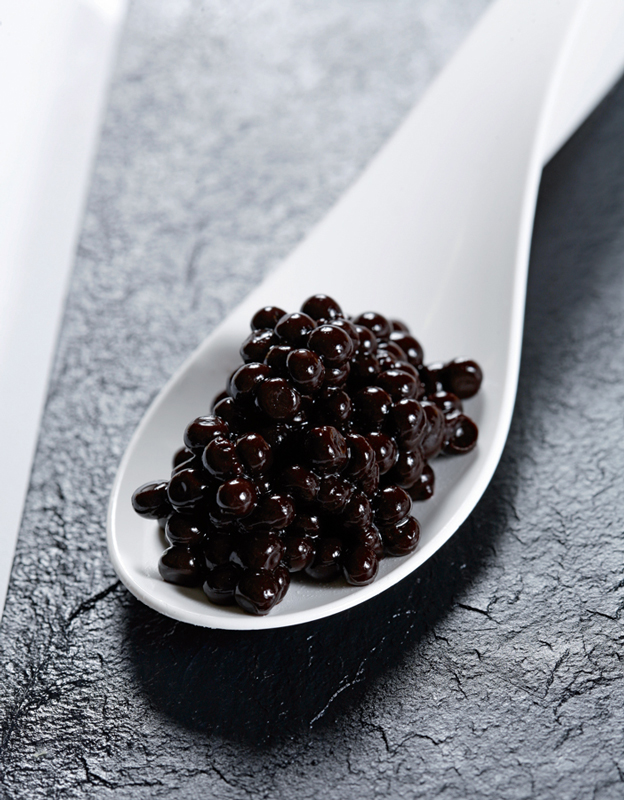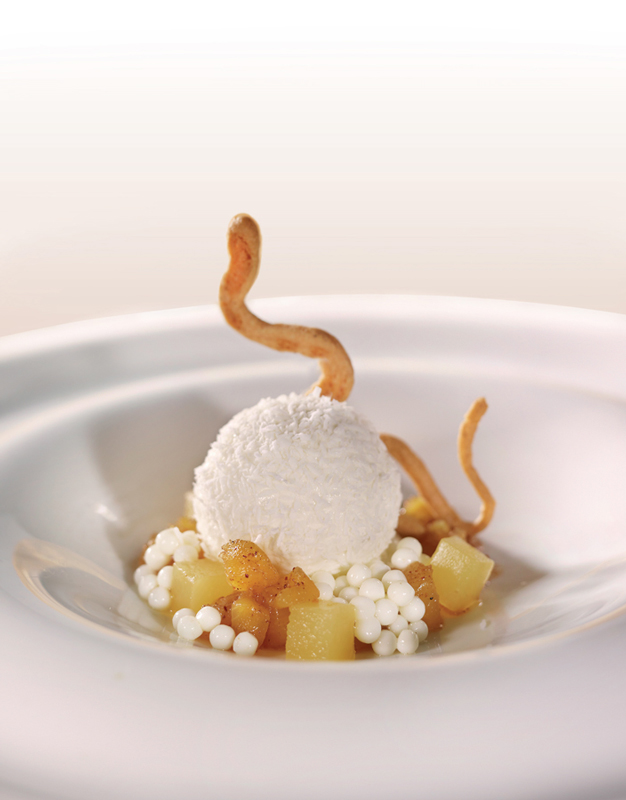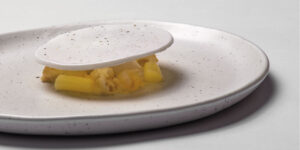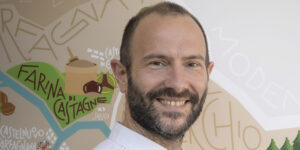Categories Pastry Chef Articles
How to apply the false caviar technique according to Jordi Puigvert
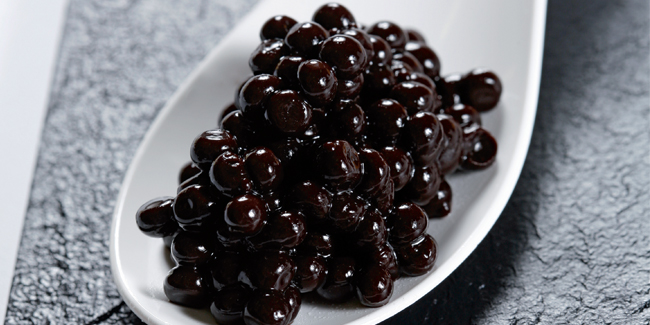
Jordi Puigvert has investigated the technical possibilities of gelling agents, thickeners, and emulsifiers to offer the professional pastry chef concrete solutions to solve all those problems that arise on a daily basis. In his book Evolution, he gives the keys to introducing new and advantageous ingredients, simplifying processes,and increasing the performance and applications of each product, ultimately, optimizing the technical side of pastry to the maximum.
Below we share technical commentary to prepare false caviar, one of the most spectacular applications that agar agar allows. Unlike the famous spherified caviar, this one always has a solid texture, can be made with any product, and its conservation in the refrigerator can be up to four days.
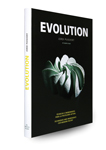
Agar agar, the star ingredient
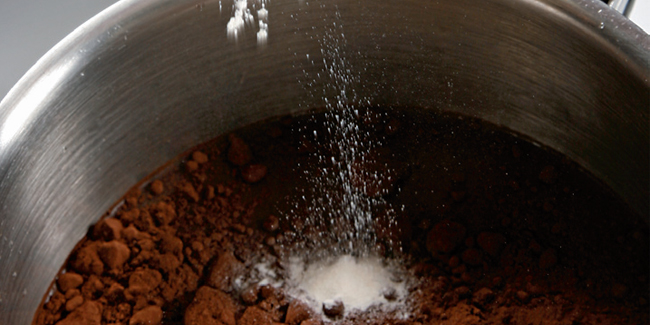
It is a vegetable gelling agent of sea origin whose use has increased considerably in the last few years. It is also extracted from the red algae of the genera gelidium and glacilaria. One of the most spectacular uses of agar agar is the creation of fake caviar, a technique which is totally different from the popular spherification.
It can be used in any type of recipes, although its performance is somewhat limited when it comes into contact with alcohol and fats. If that is the case, the quantity of agar agar should be slightly increased.
With this gelling ingredient, one can also prepare decorations which can be displayed in a cabinet for up to three days. Its shelf life is longer at room temperature, as its melting point is rather high (80ºC).
DATASHEET
Origin: Hydrocolloid extracted from the red algae gelidium and gracilaria.
General data / How it is obtained: It is a vegetable gelatin of sea origin which has been widely used in both Japanese and Chinese cuisine for centuries. The process to obtain it is based on the harvesting, washing, application of high pressure in water tanks, sifting, drying and grinding. Depending on the type of grinding, different formats are obtained, such as powder or flakes.
Application: Dissolve the agar agar in the cold liquid to be gelled. Heat up to 85ºC and leave to cool.
Dosage: By using 6 g per liter, the gel obtained acquires an easy-to-cut texture and has a pleasing mouthfeel. And if using 10 g per liter, the result is a very thick gel which can be processed with a blender until it reaches a thick sauce or coulis-like texture.
Properties: Agar agar has a melting temperature of 65ºC to 95ºC. Its gelling temperature is between 32ºC and 45ºC.
Remarks: With extremely sweet products, acids or alcohols, the amount necessary to obtain the same results should be larger. It does not withstand freezing.
Technical remarks for the preparation of false caviar
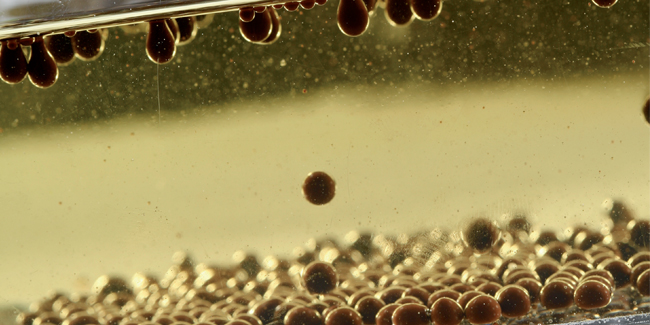
- This technique can be carried out with all kind of liquids and fruit purées (with a liquid content of at least 80%), keeping a proportion of 2 g agar agar per 250 g base.
- The amount of agar agar will only be slightly increased (0.4 g) in preparations in which the pH is lower than 3, that is, when the base has a high acidity level.
- We should take into account that, with more dense preparations, the oil will have to be less cold; otherwise the drops would remain floating on the surface of the oil when measured out with the syringe. And vice versa, the more liquid the base, the colder the oil should be.
- In order to work in a quick, effective way, a ‘Caviar Box’ can be used – a tool to make one hundred units of caviar in one go.
- Another important advantage of caviars made with this technique is that they can be stored in refrigeration for up to 4 days.
FAQs regarding the fake caviar
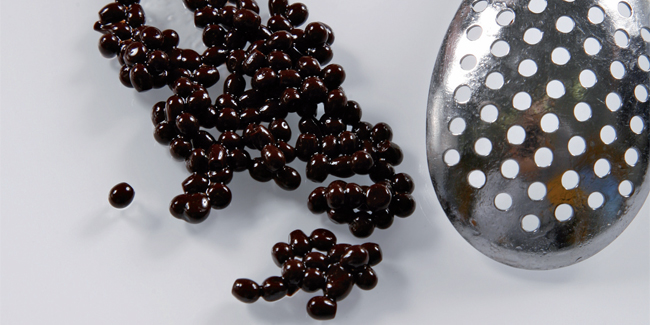
1. Why is sunflower oil used instead of olive oil or water?We are using sunflower oil in this recipe, although other types of oil can be used as long as they are neutral or at least as much neutral as possible as far as taste is concerned.
We are not using water, as our aim is to obtain small balls in the shape of perfect spheres. If water were used, the base drops would settle on the bottom of the container too quickly when piped due to the lack of density in the liquid, and we would obtain drops instead of spheres.
2. Do we obtain the same results with this technique as with that of alginate and calcium chloride?
Certainly not. The caviar obtained has a spherical shape, but its texture is always solid.
3. What is the advantage of using this technique compared with the spherification method?
We can use this technique with bases containing fatty prod-ucts, alcohol or acidity, without this being an obstacle in the preparation.
